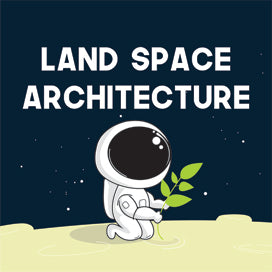Comparing 3 AI Animation Tools for Architecture and Landscape Design (2025 Review)

With AI tools becoming a major part of architectural workflows, designers are now experimenting with animation features to bring their projects to life. In this post, I compare three of the most talked-about AI animation tools for architecture and landscape design: Kling AI, MidJourney’s new video feature, and one more to be revealed soon.
Whether you're a student, architect, or landscape designer, this guide will help you choose the best AI animation tool for your next project.
🔍 Why Use AI for Architectural Animations?
Traditional rendering and animation tools can be time-consuming and technically demanding. AI animation tools offer a fast, creative, and cost-effective alternative — ideal for:
- Design concept presentations
- Landscape animations with plant movement
- Diagrammatic storytelling
- Urban design walkthroughs
🧪 Tool #1: Kling AI — Custom Camera Control with Mixed Results

Kling AI allows users to animate diagrams, plans, and renderings using customizable camera paths and lighting.
✅ Pros:
- Great camera control (zoom, rotate, pan)
- Easy interface
- Option to use DeepSeek AI for prompt generation
❌ Cons:
- Outputs can be inconsistent
- Sometimes generates unrelated or unrealistic scenes
- Credits get used up quickly (20 credits per 5-second video)
💸 Pricing:
- Starts with a free plan (3 videos)
- Standard plan: 660 credits for ~$15–20 USD
- Pro plan: $32.65/month for 3000 credits
⭐ My Rating:
- Accuracy: ⭐⭐☆☆☆
- Value for Money: ⭐⭐⭐☆☆
- Customization: ⭐⭐⭐⭐⭐
🌟 Tool #2: Midjourney (New Video Feature) — Fast, Stunning Results

MidJourney recently introduced its image-to-video animation feature, and the results are impressive — especially for realistic renders and landscape scenes.
✅ Pros:
- Extremely easy to use — no new interface needed
- Fast video generation (4 videos in ~1 minute)
- Great for realistic scenes and plant movement
- Both Auto and Manual prompt modes
- Works well with previously generated images
❌ Cons:
- Limited motion customization
- Doesn’t always follow prompt-specific camera settings exactly
💸 Pricing:
- Basic plan: $10/month
- Pro plan: $60/month (includes unlimited “Relax Mode” video generation)
⭐ My Rating:
- Accuracy: ⭐⭐⭐⭐☆
- Value for Money: ⭐⭐⭐⭐☆
- Customization: ⭐⭐⭐☆☆
Full customization review coming soon — subscribe on YouTube for updates!


🎬 Tool #3: Runway AI — Real-Time Video Editing Meets Design Animation

Runway AI is widely known in the creative industry for its video editing and AI motion generation tools, and it’s now gaining traction among architects and designers for turning static renders into animated videos.
Unlike MidJourney and Kling AI, Runway gives you more timeline-based control, ideal for those wanting to add motion effects, camera movement, or environmental transitions to their visuals.
✅ Pros:
- Intuitive video editor interface (like a simplified Premiere or After Effects)
- Great for adding movement to existing architectural renders
- “Motion Brush” lets you animate specific parts of the image (e.g. moving trees, lights, water)
- Integrates with text-to-video and image-to-video tools
- Can combine sound, motion, and overlays for presentation-ready content
❌ Cons:
- Doesn’t always preserve architectural detail in AI-generated motion
- More manual work compared to fully prompt-based tools
- Limited realism in some animation outputs depending on input quality
⚙️ How I Used It
For this test, I uploaded a static architectural diagram, used the Motion Brush tool to animate wind movement in trees and reflections on glass, and added a slow pan effect using the timeline.
It worked well for landscape scenes and concept visuals, but struggled slightly with precise control for 3D diagram animations.
💸 Pricing:
- Free plan: Includes watermark and limited resolution
- Standard plan: $12/month — access to basic tools and exports
- Pro plan: $28/month — includes advanced AI features and higher video quality
- Unlimited plan: $76/month — ideal for professional production use
⭐ My Rating:
-
Accuracy: ⭐⭐☆☆☆
-
Value for Money: ⭐☆☆☆☆
-
Customization: ⭐⭐⭐⭐☆
🆚 Kling vs MidJourney vs Runway – Final Comparison
| Tool | Accuracy | Value | Customization | Best For |
|---|---|---|---|---|
| Kling AI | ⭐⭐☆☆☆ | ⭐⭐⭐☆☆ | ⭐⭐⭐⭐⭐ | Diagrams, camera path control |
| MidJourney | ⭐⭐⭐⭐☆ | ⭐⭐⭐⭐☆ | ⭐⭐⭐⭐☆ | Fast landscape + rendering videos |
| Runway AI | ⭐⭐☆☆☆ | ⭐☆☆☆☆ | ⭐⭐⭐⭐☆ | Post-editing & cinematic polish |
⚖️ Verdict: Which AI Animation Tool Should You Use?
If you're looking for control and camera customization, Kling AI is a solid start — but expect some trial and error.
If you want fast, cinematic results with little effort, MidJourney’s new video tool is a game-changer.
🎯 Final Thoughts
AI animation tools are transforming the way we present architectural and landscape design ideas. With the right images and prompts, you can now create motion-rich presentations without heavy rendering software.
If you're experimenting with these tools, make sure to:
- Start with high-quality or realistic images
- Test both low and high motion options
- Save your best prompts for consistent results
🎬 Watch my full video comparison here:







